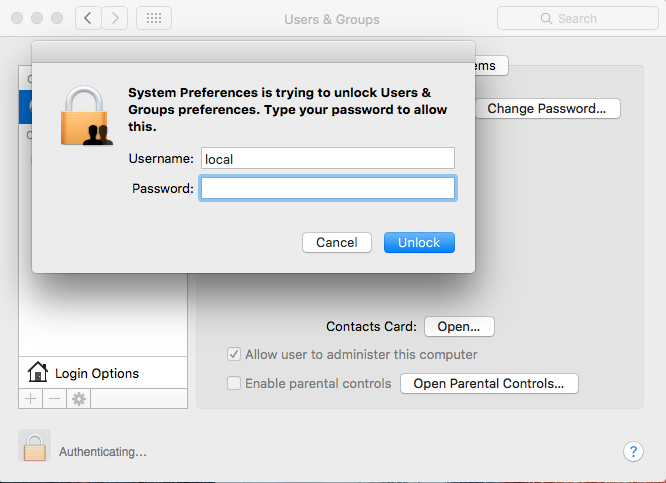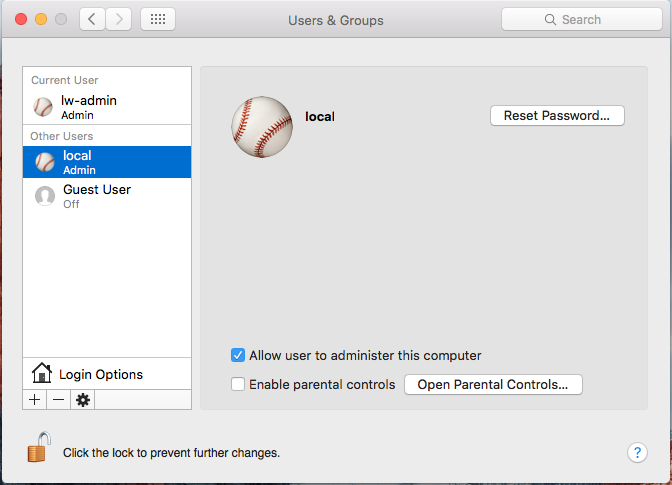Guide for OS X
A lot of programs and computer configuration options are tied to a user account. Switching to a completely new user account will likely result in a lot of wasted time reconfiguring applications and moving data around. Instead, we recommend that you demote your existing account to a standard user and create a new administrative account to use when needed. Alternatively - you can create a new standard account to log into instead. The exact steps for this process for OS X 10.11 (El Capitan) are listed below. The steps should be very similar for other versions of the operating system.
Scenarios
Whenever a privilege elevation is required (for example - installing a new application or updating OS X) you will be prompted to grant that elevation by logging in with your administrator account's password.
The prompt will look like this:
Developers
With the setup above, managing services within a terminal session requires that you first su to an administrative user, and then use sudo from within that session. This is because only administrators are allowed to run sudo by default. To allow your non-administrative account to run sudo instead, you simply need to add your account to the sudoers file. For increased security, restrict your non-administrative account to only be able to use sudo with the specific applications and commands necessary.










